If you want to know about the staircase design or landscape garden or requirements for disabled persons in a building, please click the link.
Introduction
Resort design refers to the process of creating and planning the physical layout, architecture, and overall atmosphere of a resort property. This includes everything from the design of individual guest rooms and suites to the overall layout of the property, including amenities such as swimming pools, restaurants, and outdoor spaces.
The significance of resort design in the hospitality industry is paramount, as it can greatly impact a guest’s overall experience and satisfaction with their stay. Good resort design can help to create a welcoming and immersive atmosphere that transports guests away from their everyday lives and into a world of relaxation and luxury. In contrast, poor resort design can detract from the guest experience and leave a negative impression that can impact their likelihood of returning or recommending the resort to others.

Attracting guests is a key goal for any resort, and good resort design can help to differentiate a property from its competitors and attract visitors looking for a unique and memorable experience. By incorporating elements such as unique architecture, stunning natural surroundings, and world-class amenities, a resort can create a sense of exclusivity and luxury that appeals to discerning travelers.
In addition, good resort design can play a crucial role in creating a memorable guest experience. A well-designed resort can help to create a sense of place and a unique identity that guests can connect with and remember long after their stay is over. By providing a seamless and enjoyable experience that meets their needs and exceeds their expectations, a resort can create loyal customers who return time and again, driving long-term success and growth for the property.
Overall, good resort design is essential for attracting guests, creating a memorable experience, and driving success in the competitive hospitality industry. By prioritizing design and investing in creating a unique and immersive atmosphere, resorts can stand out from the crowd and build a loyal customer base that drives long-term success.
1) Understanding the Site and Its Context
Analyzing the site and its context is a crucial first step in resort design, as it allows designers to understand the unique opportunities and challenges of a particular location and to create a design that is harmonious with the surrounding environment. Before beginning the design process, it is essential to conduct a thorough site analysis that takes into account factors such as topography, climate, landscape, and cultural context.
When choosing a site for a resort, there are many factors to consider. Topography, for example, can impact the layout and design of the resort, as steep or uneven terrain may require innovative design solutions to ensure accessibility and comfort for guests.
Climate is another important consideration, as it can impact everything from the materials used in construction to the design of outdoor spaces and amenities. The landscape and surrounding environment are also key factors, as they can inspire the design aesthetic and create a sense of place that is unique and immersive.
Other factors to consider when choosing a site include accessibility, proximity to key attractions or amenities, and the cultural context of the surrounding area. For example, a resort located in a culturally significant area may want to incorporate elements of local art, architecture, or design into the property in order to create a sense of authenticity and respect for the local community.
Once a site has been selected, a thorough site analysis can inform the design decisions for the resort. By understanding the unique features and challenges of the site, designers can create a design that is harmonious with the surrounding environment and maximizes the opportunities presented by the location.
For example, a resort located on a hillside may incorporate terraced gardens or decks that take advantage of the natural landscape and provide stunning views for guests. Similarly, a resort located in a hot and humid climate may incorporate natural ventilation and shading strategies to keep guests cool and comfortable.
Overall, analyzing the site and its context is a crucial step in the resort design process that can inform design decisions and help create a unique and immersive experience for guests.
By considering factors such as topography, climate, landscape, and cultural context, designers can create a design that is both functional and harmonious with the surrounding environment, leading to a more memorable and enjoyable experience for guests.
2) Designing for the Guest Experience
The guest experience should be the primary focus of resort design, as the ultimate goal of any resort is to provide a memorable and enjoyable experience for guests. A successful resort design should prioritize the needs and desires of guests and create an environment that is both welcoming and immersive. By focusing on the guest experience, resorts can differentiate themselves from their competitors and create loyal customers who return time and again.
Creating a seamless experience for guests is essential in resort design, as it can greatly impact their overall satisfaction with their stay. From the moment guests arrive on the property to the moment they depart, every aspect of their experience should be carefully planned and executed to ensure a smooth and enjoyable stay. This includes everything from the check-in process to the layout of guest rooms, the quality of amenities, and the design of outdoor spaces.
Key design elements that contribute to a positive guest experience include amenities, outdoor spaces, and room layout. Amenities such as swimming pools, spas, and fitness centers can provide guests with a variety of options for relaxation and recreation, while outdoor spaces such as gardens, terraces, and courtyards can provide stunning views and opportunities for outdoor activities.
Room layout is also an important design element that can impact the guest experience. Guest rooms should be designed with comfort and functionality in mind, providing ample space for relaxation and rest, as well as necessary amenities such as comfortable bedding, high-quality lighting, and ample storage space.
In addition to these key design elements, creating a positive guest experience requires attention to detail and a commitment to excellence in every aspect of the resort design. From the selection of materials and finishes to the layout of public spaces and the quality of service provided by staff, every detail should be carefully planned and executed to create a cohesive and immersive experience for guests.
Overall, prioritizing the guest experience is essential in resort design, as it can differentiate a property from its competitors and create a loyal customer base. By creating a seamless experience for guests from arrival to departure and incorporating key design elements such as amenities, outdoor spaces, and room layout, resorts can create a truly memorable and enjoyable experience for their guests.
3) Balancing Design and Functionality
Balancing design and functionality is a crucial consideration in resort design, as a resort must not only be visually appealing but also meet the practical needs of guests and staff. While a visually stunning resort can attract guests and create a memorable experience, a resort that fails to meet functional needs can lead to frustration and disappointment for guests and staff alike.
One of the key challenges in achieving a balance between design and functionality is ensuring that the resort’s design elements are not only visually appealing but also serve a functional purpose. For example, a resort that prioritizes aesthetics over practicality may have beautiful but uncomfortable furniture, which could negatively impact the guest experience. On the other hand, a resort that focuses solely on functionality may have a sterile, uninviting atmosphere, which can be equally detrimental to the guest experience.
One way to achieve a balance between design and functionality is to involve all stakeholders in the design process, including guests, staff, and management. This can help to ensure that the resort’s design meets the needs and preferences of all parties involved.
Another strategy is to prioritize flexibility in the design, allowing for changes and adaptations as needed. This can help to ensure that the resort can evolve and adapt to changing guest needs and preferences over time.
Examples of resorts that have successfully balanced design and functionality include the Aman Tokyo, which features a minimalist design that is both visually stunning and functional, with a focus on creating a peaceful, Zen-like atmosphere for guests. The resort’s use of natural materials and neutral color palette creates a calming, restful environment, while the layout of the rooms and common areas is carefully designed to provide both privacy and social interaction.


Another example is the Four Seasons Resort Costa Rica at Peninsula Papagayo, which balances natural beauty with functionality. The resort is set on a stunning peninsula surrounded by lush rainforest and pristine beaches, and its design incorporates the natural environment into the resort’s layout and decor. At the same time, the resort’s amenities and services are carefully designed to meet the needs of guests, with a focus on comfort and convenience.
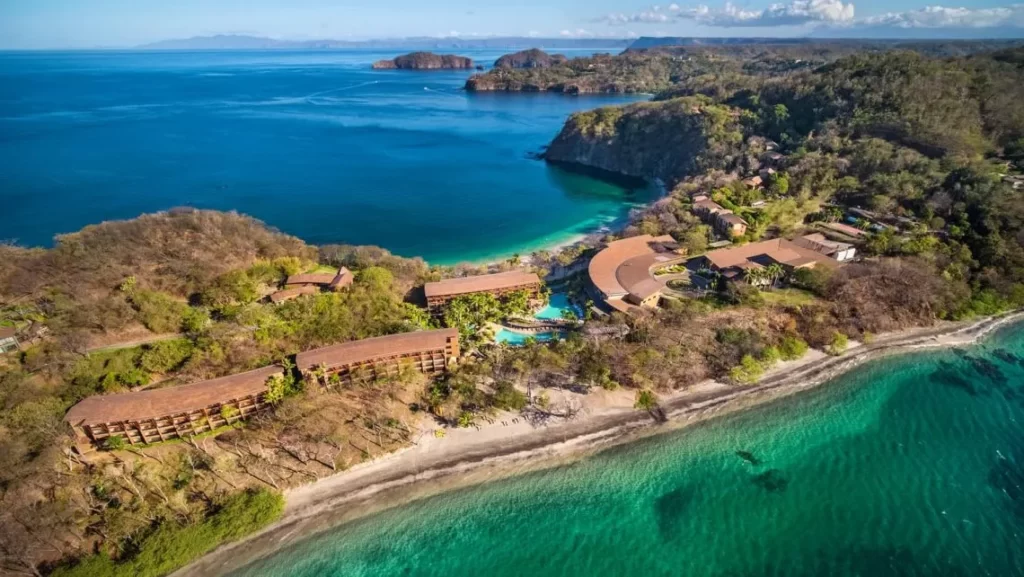
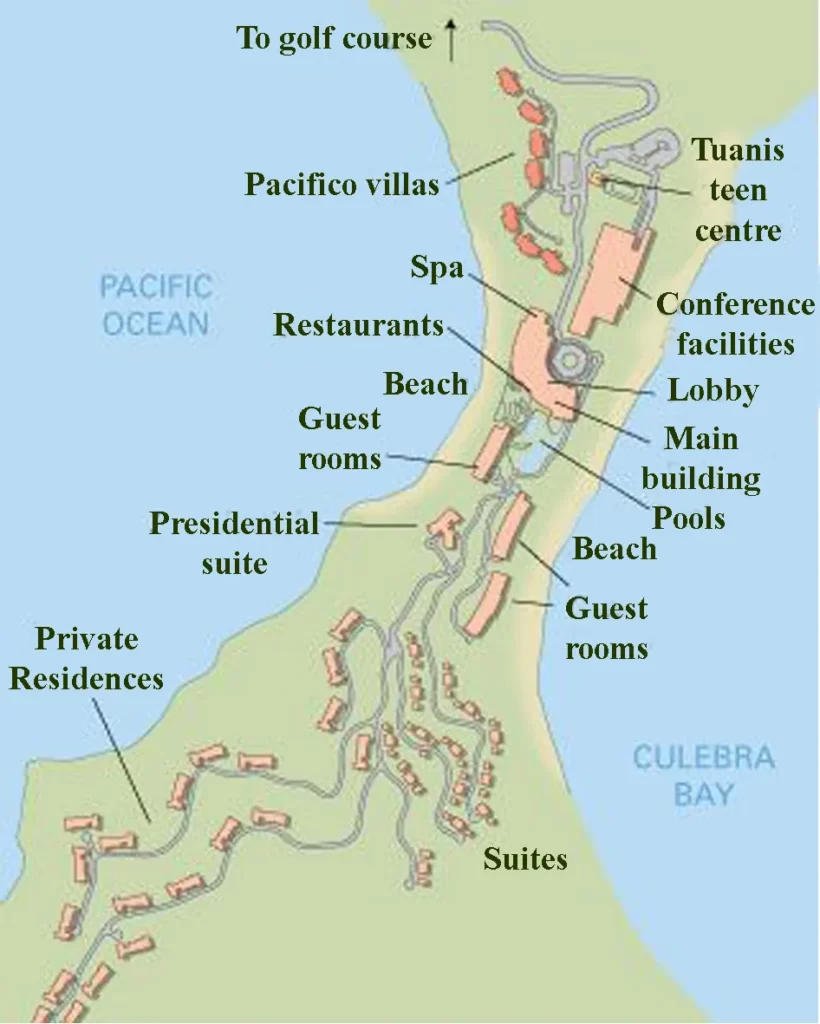
In both of these examples, the resorts have successfully balanced design and functionality by prioritizing the needs and preferences of their guests while creating visually stunning environments that enhance the overall guest experience.
4) Designing for Accessibility and Inclusivity
Designing resorts that are accessible and inclusive for all guests is essential in creating an enjoyable and welcoming experience for everyone, regardless of their physical abilities, age, or cultural background. In addition to being a legal requirement in many countries, designing for accessibility and inclusivity can also benefit all guests by improving navigation, reducing stress, and enhancing the overall guest experience.
One key design strategy for improving accessibility is the use of ramps and elevators. Ramps can be used to provide wheelchair access to buildings and outdoor areas, while elevators can make it easier for guests with mobility impairments to navigate between floors. In addition, elevators can also be useful for guests with strollers or luggage, making them an asset for all guests.
Clear and concise signage is also an important design strategy for improving accessibility and inclusivity. Signs can be used to provide directions, identify amenities and services, and convey important information about the property. Large, high-contrast text and symbols can make signage easier to read and understand for guests with visual impairments, while clear and concise language can make it easier for guests with cognitive impairments or language barriers to understand.
Other design strategies for improving accessibility and inclusivity can include adjustable lighting and temperature controls, wider doorways and corridors, and accessible parking spaces. By designing with accessibility and inclusivity in mind, resorts can create a more welcoming and enjoyable experience for all guests, regardless of their physical abilities, age, or cultural background.
5) Case Studies of Successful Resort Design
There are many resorts that have been successful in terms of their design and guest experience. Here are a few examples:
- Aman Tokyo: This minimalist hotel is located in the heart of Tokyo and offers breathtaking views of the city skyline. The resort’s design features natural materials and a neutral color palette that creates a peaceful, Zen-like atmosphere. The resort’s design strategy focuses on creating an environment that is both functional and visually stunning, with a focus on providing guests with a sense of tranquility and relaxation.

- Soneva Fushi, Maldives: This eco-resort is located on a private island in the Maldives and is known for its luxurious accommodations and commitment to sustainability. The resort’s design strategy incorporates natural materials and local craftsmanship, while also incorporating modern amenities and technologies. The resort’s unique design elements, such as its tree-top dining platforms and open-air bathrooms, make it stand out from other luxury resorts.


- The Ritz Carlton, Bali: This beachfront resort is located on the island of Bali and offers stunning views of the Indian Ocean. The resort’s design strategy incorporates Balinese architecture and design elements, such as thatched roofs and open-air pavilions. The resort’s amenities, such as its infinity pools and spa, are carefully designed to provide guests with a sense of relaxation and rejuvenation.
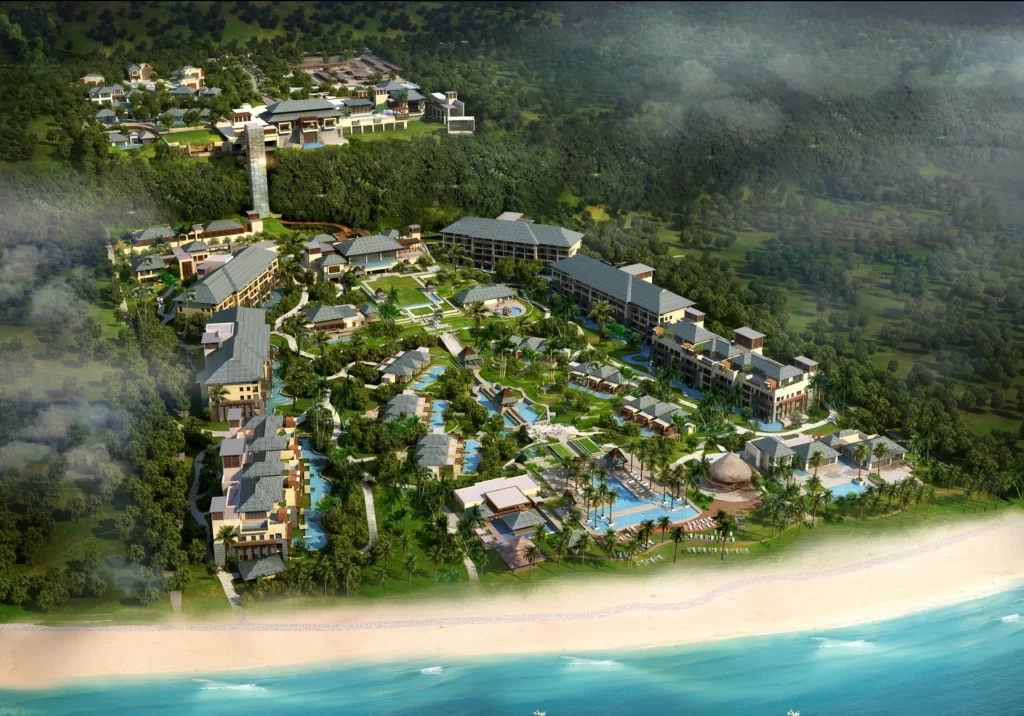

All of these resorts share a few common design strategies that contribute to their success:
- Use of natural materials: All of these resorts incorporate natural materials, such as wood, stone, and bamboo, into their design. This creates a sense of warmth and connection to the natural environment.
- Unique design elements: Each of these resorts has unique design elements that set it apart from other resorts. These elements help to create a memorable guest experience and provide a sense of luxury and exclusivity.
- Focus on guest experience: Each of these resorts prioritizes the guest experience, with a focus on providing comfort, relaxation, and rejuvenation. This is reflected in the resort’s amenities, such as its spa, pools, and restaurants.
These design strategies could be applied to other resort design projects by prioritizing the guest experience, incorporating natural materials and unique design elements, and using technology and modern amenities to enhance the guest experience.
By doing so, resort designers can create environments that are both visually stunning and functional, providing guests with a memorable and satisfying experience.
6) Sustainable Resort Design
Sustainable design is becoming increasingly important in the hospitality industry, as the industry seeks to reduce its environmental impact and operate in a more responsible and sustainable manner. By incorporating sustainable design strategies into resort design, designers can create properties that are both environmentally friendly and economically efficient, while also providing a unique and memorable experience for guests.
There are many sustainable design strategies that can be used in resort design, including passive cooling, water conservation, and the use of local materials. Passive cooling strategies, such as shading devices, natural ventilation, and green roofs, can help reduce the need for energy-intensive cooling systems, while also providing a comfortable and pleasant indoor environment for guests.
Water conservation is another important consideration in sustainable resort design, as water is often a scarce resource in many regions. Design strategies such as low-flow fixtures, rainwater harvesting, and wastewater treatment systems can help reduce water consumption and ensure that the property operates in a responsible and sustainable manner.
The use of local materials is also an important sustainable design strategy, as it can reduce transportation costs and support the local economy. By using locally sourced materials, designers can create a unique and authentic aesthetic that reflects the local culture and environment, while also reducing the environmental impact of the property.
The benefits of sustainable resort design are numerous, and include cost savings, reduced environmental impact, and improved guest satisfaction. By reducing energy and water consumption, sustainable resort design can lead to significant cost savings for property owners and operators, while also reducing the carbon footprint of the property and supporting sustainable development practices.
In addition, sustainable resort design can help improve guest satisfaction, as many guests today are increasingly environmentally conscious and seek out properties that share their values. By incorporating sustainable design strategies into the property, designers can create a unique and immersive experience that resonates with guests and sets the property apart from its competitors.
Overall, sustainable design is an important consideration in resort design, as it can help create properties that are both environmentally responsible and economically efficient, while also providing a memorable and enjoyable experience for guests.
7) Trends in Resort Design
There are several current trends in resort design that are gaining popularity, including wellness-focused resorts, eco-resorts, and immersive experiences.
Wellness-focused resorts are designed to promote health and well-being through a variety of amenities and services, such as spas, fitness centers, and healthy dining options. These resorts aim to provide guests with a holistic experience that focuses on mind, body, and spirit, and can appeal to a wide range of travelers seeking to improve their overall health and wellness.

Eco-resorts, on the other hand, prioritize sustainability and environmental responsibility, and aim to minimize their impact on the surrounding environment. These resorts often incorporate sustainable design strategies such as the use of renewable energy sources, water conservation, and the use of locally sourced materials.

Immersive experiences are another current trend in resort design, with many properties offering guests a chance to fully engage with the local culture and environment. These experiences can include everything from guided hikes and cultural tours to cooking classes and language lessons, and aim to provide guests with a deeper understanding and appreciation of the local community.

Incorporating these trends into resort design can offer several benefits, such as differentiation from competitors, increased guest satisfaction, and the potential for higher room rates. However, there are also several challenges to consider when incorporating these trends into resort design.
- For example, wellness-focused resorts can be costly to design and operate, requiring specialized amenities and services that may be outside of the traditional resort model.
- Eco-resorts may also require significant investment in sustainable design strategies, and may face challenges in meeting guest expectations for luxury and comfort.
- Immersive experiences can also be challenging to incorporate into resort design, as they may require significant investment in staff training and development, as well as coordination with local partners and organizations.
Despite these challenges, incorporating current trends in resort design can help properties stand out in a crowded marketplace and provide guests with a unique and memorable experience. By carefully evaluating the potential benefits and challenges of these trends, designers can create properties that offer a truly immersive and satisfying experience for guests.
8) Designing for Different Types of Resorts
There are several types of resorts, each with unique design considerations based on their location, climate, and target market. Some of the most common types of resorts include beach resorts, mountain resorts, and urban resorts.
Beach resorts
Beach resorts are typically located along the coast, and their design often emphasizes access to the beach and water activities. Design considerations for beach resorts might include the placement of rooms and public areas to maximize ocean views, the creation of outdoor spaces such as pools and beachside lounges, and the use of materials and colors that evoke a beachy, relaxed atmosphere.
Mountain resorts
Mountain resorts are typically located in mountainous areas, and their design often emphasizes access to outdoor activities such as skiing and hiking. Design considerations for mountain resorts might include the placement of rooms and public areas to maximize mountain views, the creation of outdoor spaces such as fire pits and hot tubs, and the use of materials and colors that evoke a cozy, rustic atmosphere.
Urban resorts
Urban resorts are typically located in city centers or other urban areas, and their design often emphasizes access to cultural attractions and nightlife. Design considerations for urban resorts might include the placement of rooms and public areas to maximize views of the city skyline or other landmarks, the creation of outdoor spaces such as rooftop bars or gardens, and the use of materials and colors that evoke a modern, urban atmosphere.
The location, climate, and target market of each type of resort can also influence the design decisions. For example, a beach resort located in a tropical climate might incorporate elements such as palm trees, outdoor showers, and brightly colored fabrics to create a distinctly tropical vibe. On the other hand, a mountain resort located in a colder climate might incorporate elements such as stone fireplaces, woolen blankets, and cozy seating areas to create a warm and inviting atmosphere.
The target market of each type of resort can also influence the design decisions. For example, a luxury beach resort catering to high-end travelers might feature high-end finishes and amenities such as private beach cabanas and gourmet dining options, while a family-friendly beach resort might feature amenities such as a kids’ club and a water park.
In summary, each type of resort has its unique design considerations that are influenced by its location, climate, and target market. By carefully considering these factors, designers can create resorts that provide guests with a unique and memorable experience that is tailored to their preferences and needs.
9) Materials and Technology in Resort Design
In recent years, there has been a growing trend towards incorporating advanced materials and technologies into resort design. These materials and technologies can improve the guest experience, reduce environmental impact, and enhance the aesthetics of the resort.
One area where technology is playing an increasingly important role is in the use of smart home technology. This can include everything from automated lighting and temperature control systems to voice-activated entertainment systems and automated room service. Smart home technology can improve the guest experience by providing greater convenience and personalization, while also reducing energy consumption and waste.
Renewable energy sources such as solar, wind, and geothermal power are also becoming increasingly common in resort design. These sources can reduce the resort’s dependence on fossil fuels, lower operating costs, and improve the sustainability of the property. Additionally, renewable energy sources can be used to power amenities such as pools, spas, and outdoor lighting.
Another area of innovation in resort design is the use of innovative building materials. This can include everything from sustainable bamboo and recycled steel to advanced composites and 3D-printed materials. Innovative building materials can reduce the environmental impact of resort construction and operation, while also improving the aesthetics and durability of the property.
One example of innovative building materials being used in resort design is the use of shipping containers as building blocks for eco-friendly resorts. Shipping containers are strong, durable, and easily transportable, making them an ideal choice for resorts in remote locations. Additionally, shipping container resorts can be designed to be modular and scalable, allowing them to adapt to changing guest needs and demands.
In conclusion, the use of advanced materials and technologies in resort design can provide numerous benefits, including improving the guest experience, reducing environmental impact, and enhancing the aesthetics of the property. By incorporating these innovations into their designs, resort designers can create properties that are both sustainable and enjoyable for guests.
10) Few examples of resorts in India & the world
Here are a few examples of popular resorts in India:
The Oberoi Udaivilas, Udaipur:

Located on the banks of Lake Pichola in Udaipur, Rajasthan, this luxurious resort features traditional architecture and design elements, beautiful gardens, and stunning views of the lake.
Taj Exotica Resort & Spa, Goa:
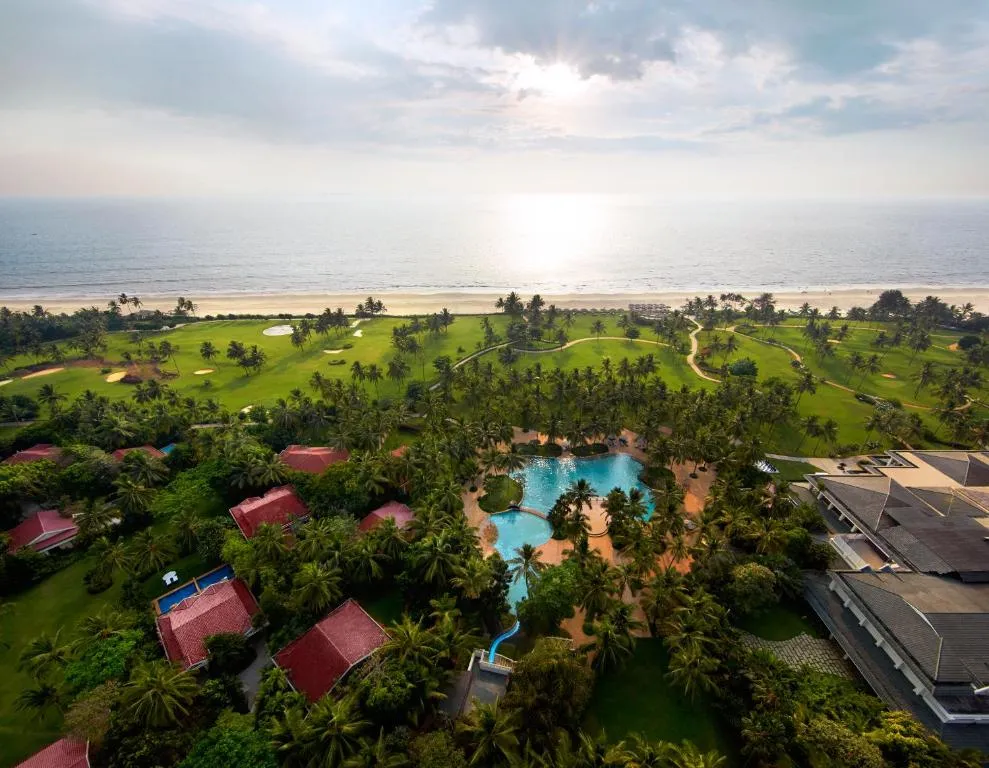
This beachfront resort in Goa features a blend of Indian and Mediterranean architecture, luxurious villas, and lush tropical gardens.
Ananda in the Himalayas, Uttarakhand:

Set in the foothills of the Himalayas, this wellness-focused resort offers stunning views of the mountains, Ayurvedic treatments, yoga and meditation classes, and luxurious accommodations.
The Tamara Coorg, Karnataka:

This eco-friendly resort in Coorg, Karnataka is set amidst coffee plantations and features modern design elements, spacious villas, and a range of outdoor activities.
The Leela Palace, New Delhi:
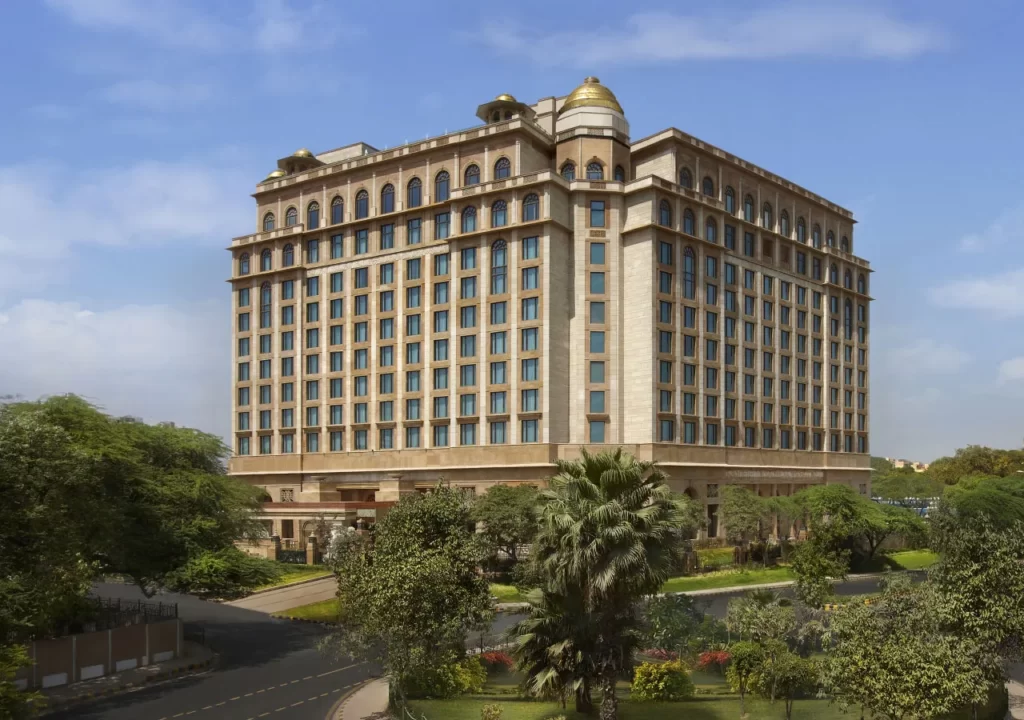
This luxurious palace-style hotel in New Delhi features ornate architecture, opulent interiors, and a range of high-end amenities and services.
These are just a few examples of the diverse range of resorts available in India, each offering their own unique design and guest experience.
Here are a few examples of popular resorts around the world:
Aman Tokyo, Japan:

This minimalist luxury hotel in Tokyo, Japan features a contemporary design with traditional Japanese elements, such as shoji screens and washi paper.
The Brando, French Polynesia:
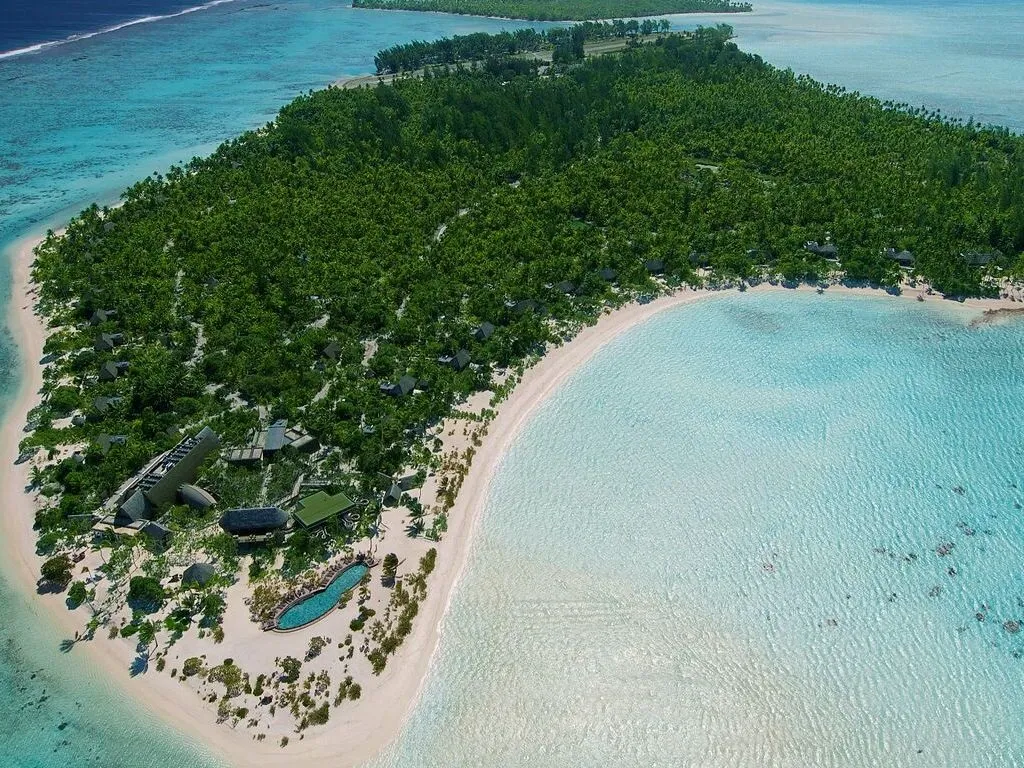
Located on a private island in French Polynesia, this eco-friendly resort features luxurious villas and a range of sustainability initiatives, such as seawater air conditioning and solar power.
Soneva Fushi, Maldives:

This luxury resort in the Maldives features sustainable design elements, such as recycled materials and solar power, and a range of outdoor activities, including snorkeling and diving.
Singita Sabi Sand, South Africa:
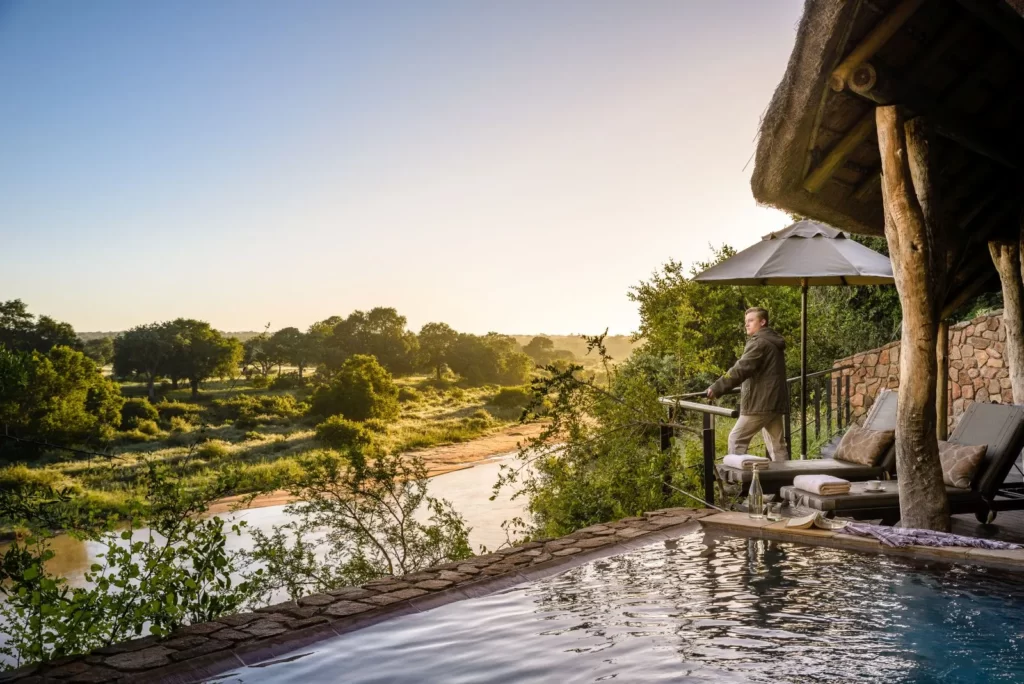
This luxurious safari lodge in South Africa features a blend of contemporary and traditional African design elements, including thatched roofs, rustic wood furnishings, and African art.
Four Seasons Resort Bali at Sayan, Indonesia:

Set in the heart of the jungle in Ubud, Bali, this luxury resort features traditional Balinese design elements, such as thatched roofs and teak wood furnishings, and a range of wellness-focused activities, including yoga and meditation.
These are just a few examples of the diverse range of resorts available around the world, each offering their own unique design and guest experience.
11) Conclusion
In summary, good resort design is crucial in creating a successful hospitality business. This article has discussed various aspects of resort design, including site analysis, guest experience, sustainability, current trends, types of resorts, materials and technologies, accessibility, and balancing design and functionality.
Through these discussions, it is clear that resort design must consider various factors, such as location, climate, target market, and cultural background. Furthermore, the article has emphasized the importance of creating a positive guest experience, incorporating sustainable design strategies, and being inclusive and accessible to all guests.
As a call-to-action, readers are encouraged to learn more about resort design or to contact a professional architect to help with their resort design needs. With the right design strategies and careful consideration of all factors, resorts can create a unique and memorable experience for guests while also contributing to the long-term success of the hospitality business.